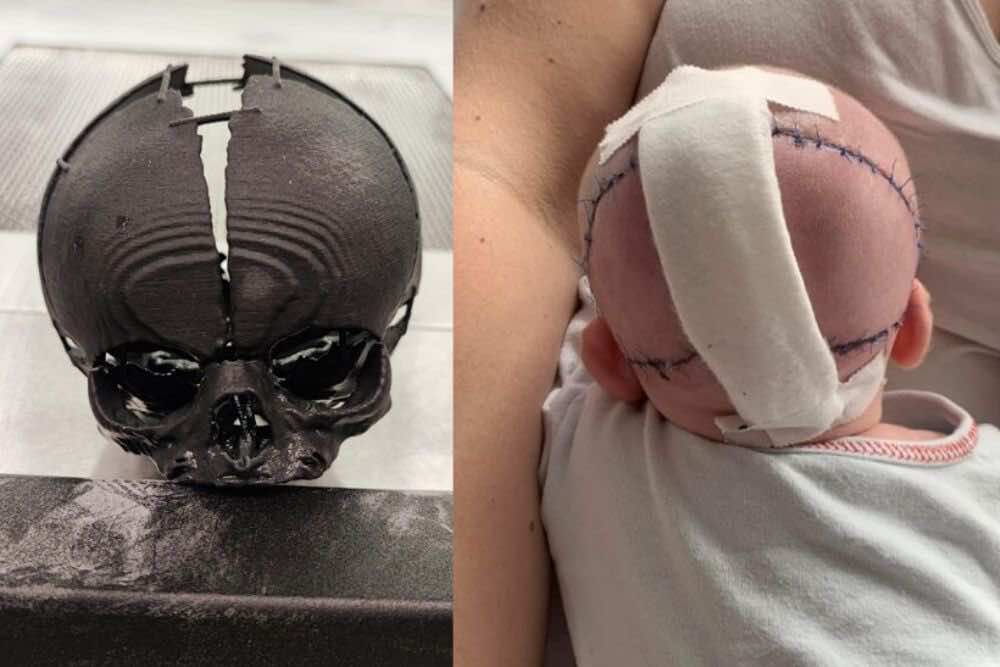While some newborns are born with abnormalities and missing body parts, missing a portion of their skulls puts their lives at serious risk. However, lately, a group of scientists, engineers, and doctors worked together to provide a 3D-printed skull to make up for the one that was gone, saving a child’s life.
A baby’s 3D-printed skull was provided by the Polish company Sygnis to save a newborn’s life and give her a chance at a longer life, marking a significant step in medical engineering.
In contrast to adult surgery, neonatal procedures are more delicate, and medical professionals must act quickly to find answers since every second counts. In this case, the girl needed surgery within four days of birth because she was born without a fully developed occipital bone, which left her brain tissue partially exposed. Doctors asked Sygnis to create a prototype to help them visualise the area of missing bone and accurately predict the conditions they would face during the operation.
The infant was sent to the University Children’s Hospital of Kraków shortly after birth when an MRI and CT scan helped create a virtual model of her skull. This model was then given to engineers from Sygnis, who created the precise 3D model.
This procedure did not replace anything; instead, it filled in the gaps for the very important body part that was lacking and needed for the baby’s future survival.
Sygnis worked with e-Nable Poland and the Upper Silesian Children’s Health Center to assure the newborn’s safety and survival after the surgery, which was successful.
Sygnis stated that it only had 96 hours to speak with relevant individuals and specialists, as well as Pawel Ozga, who was in charge of imaging segmentation and 3D model preparation for printing. Next, the researchers created a skull using the newborn’s missing occipital bone during childbirth.
By starting from scratch and precisely defining the materials needed, 3D printing allows users to produce finished products using only schematics. However, it presents an enormous leap in medical technology as experts and researchers work to find new ways to offer and replace missing organs.
Advances in 3D printing, according to reports from 2015, would revolutionise current medicine by making available essential organs and human body parts that are difficult for users to receive through donations. Since then, 3D printing technology has significantly improved, saving millions of lives.

